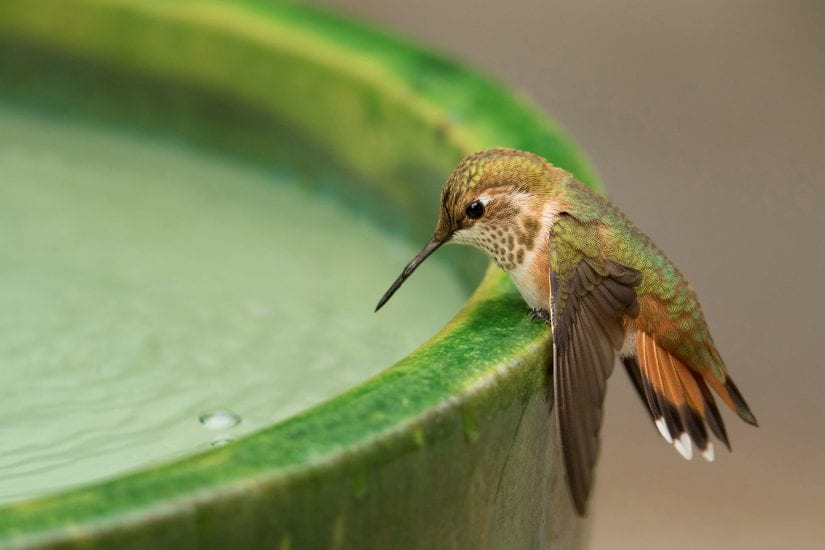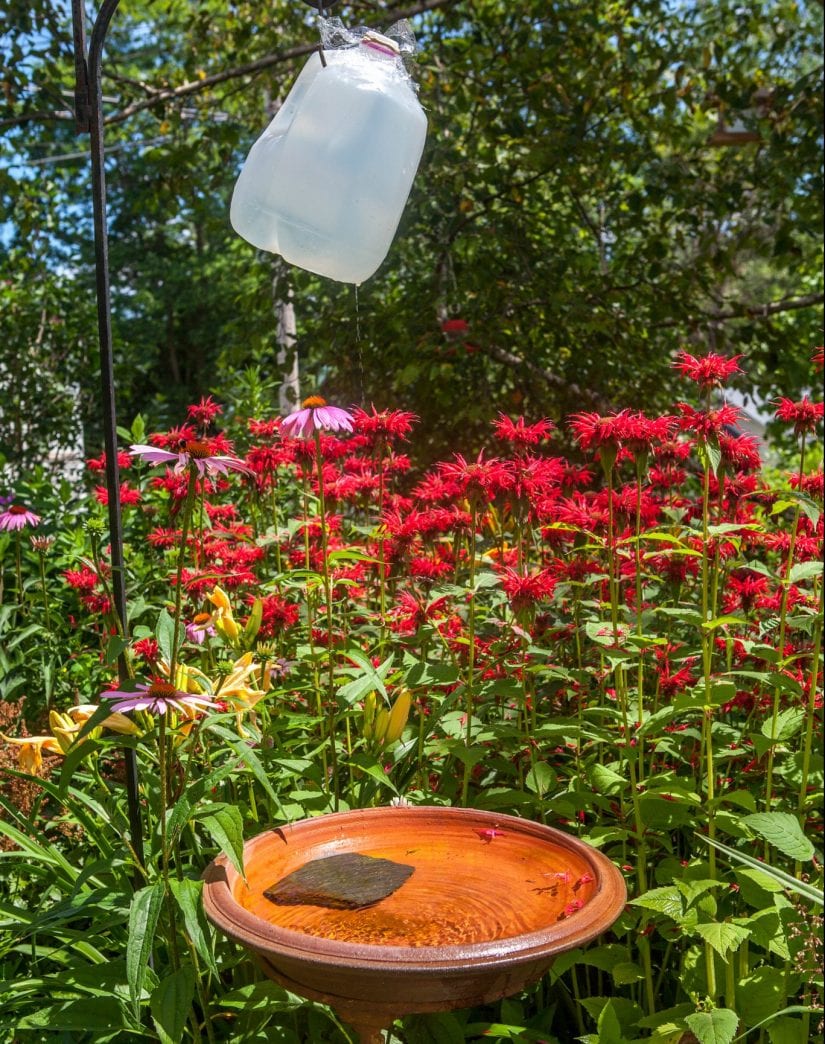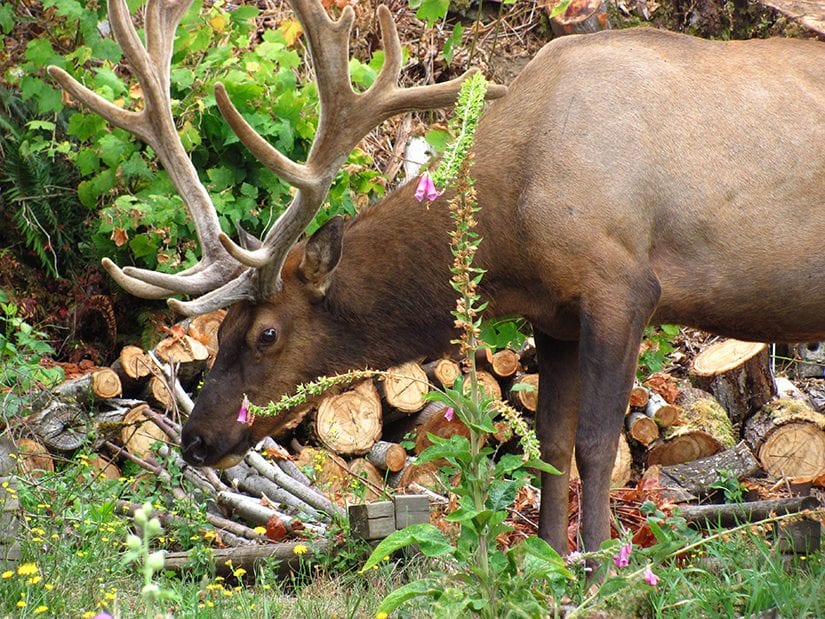Delving into the world of backyard habitats not only offers joy and fulfilment, it also fosters a deeper connection with the vibrant wildlife thriving in your very own neighbourhood.
Learn how to create a backyard habitat that helps nurture local wildlife and brings birds and animals to your backyard. Whether you live in the city or a rural area, you can provide all of the basic necessities – natural food, shelter, and water – that will help attract and enhance the enjoyment of your space for wildlife.
Plant a wildlife-friendly garden
Birds, bunnies, and other animals, like deer, naturally feed on surrounding plants and bushes. To create a backyard wildlife-friendly landscape, you want to keep your outdoor space as natural and wild as possible.
Here are just a few quick tips on attracting wildlife to your yard:
- Keep your garden natural and wild. Native plants are adapted to local climates and can provide food to wildlife year-round. They also attract pollinators and native insects, which in turn, attract the wild animals who eat them.
- Let a part of your lawn grow long. Long grass retains moisture better (less watering!) and provides a great habitat for insects, which draws in insect-eating wildlife too.
- Choose plants that wildlife love. Sunflowers are a great choice for those who want to help wildlife. These cheery sunshine-hued plants provide pollen and nectar for pollinators, such as honeybees, when they are in bloom and their seeds feed birds in the fall.
- Hummingbirds love brightly- coloured flowers that are tubular and hold lots of nectar, like bee balms, rhododendrons, columbines, day lilies and hollyhocks.
- Planting verbenas, asters and wild roses are perfect for short-tongued insects such as bees and flies.

Use a bird bath
With a bird bath, you are bound to get all sorts of visitors. The best baths are those that mimic shallow puddles (which are basically nature’s bird baths).
Want to up your bird bath game? Add a water dripper! Birds will be attracted to the sound and movement of the water.
All you will need is a plastic milk jug. Poke a tiny hole in the bottom and hang it above your bird bath so that it drips slowly down into the bath throughout the day. Be sure to unscrew the lid a little. Releasing some air this way will keep the jug from collapsing in on itself. Refill the dripper every day or two, and regularly clean your bird baths to prevent disease*.
*Avian influenza (HPAI): Well-maintained bird baths and running water sources are considered relatively low-risk for HPAI. During times of extreme heat, provide water sources with caution. Water sources must be emptied, cleaned, and refilled regularly. If you see any signs of sick birds in your yard, empty the water sources and discontinue use immediately. Read more on highly pathogenic avian influenza.

Provide some natural shelter
Wild animals need natural shelter, like trees and shrubs, to provide coverage from rain, wind and snow while also providing protection from predators. An absence or shortage of shelter on your property will limit visits from wildlife. Some ideas for natural shelter include:
- If your outdoor space allows, consider letting a section of your yard grow naturally. This will encourage native flowers and grasses to blossom, as the local wildlife will see your garden as an extension of their existing habitat and will be more likely to visit. You might also want to consider planting native trees. For example, planting evergreens provides effective cover in the cold winter months, while deciduous trees help block the sun but allow for more air circulation.
- Brush piles made from logs, branches, flower stalks, leaves and twigs can give dense cover to small mammals, birds, reptiles and amphibians. As the piles slowly decay, they attract more insects, providing additional food for birds.
- Rock piles, especially when positioned near water and on sunny south-facing slopes, can provide great habitat for frogs and snakes.
- Piles of leaf litter can provide a place for insects, birds, and amphibians to find food, hide, nest and overwinter. They also serve as a natural mulch to fertilize the soil.

Build a birdhouse
Additionally, if your space allows, building a birdhouse is another alternative for a safe shelter. Birds are always on the lookout for a safe, covered spot to raise their young in the spring and summer or for shelter on cold winter nights.
Birdhouses should be made of untreated wood, such as pine or cedar, which is durable and porous – allowing heat to escape in the summer and keep the young animals from getting too hot inside. Include a hinged or sliding roof to clean out the house each winter after the nesting season has finished. Birdhouses should be placed on a pole or up a tree at least three feet off the ground and should be cleaned before the start of the nesting season.

More like this
Three tips for a bird-friendly backyard
Striking out at bird-window collisions
Get the facts on backyard bird feeding
Is it bad to feed wild animals?
